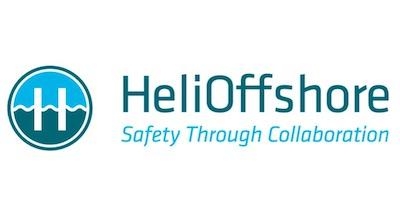Thu, Dec 14, 2017
Simulator Trials Stress Collision Avoidance
Efforts to advance the development and implementation of enhanced Helicopter Terrain Awareness and Warning Systems (HTAWS) took a step forward last month with the completion of simulator trials of Honeywell’s EGPWS MKXXII HTAWS solution. Effective collision avoidance is fundamental to helicopter safety, and a collaborative project involving multiple stakeholders is working to give pilots earlier alerts through the widespread adoption of upgraded HTAWS in the offshore helicopter sector.

A working group organized by offshore helicopter safety organization HeliOffshore is hopeful that the successful demonstration of the system’s new envelopes providing enhanced collision avoidance protection without nuisance alerts will support its efforts to have upgraded HTAWS available for a variety of aircraft from 2018.
In trials run by Honeywell from 13-19 November, pilots from offshore operators CHC Helicopter and Bristow Group evaluated the modified Honeywell EGPWS MKXXII system in a Sikorsky S92 simulator at Bristow’s base in Aberdeen. The trials demonstrated the use of the UK Civil Aviation Authority’s CAP 1519 protection envelopes and how these can reduce the risk of controlled flight into terrain/water accidents.
Honeywell will use data generated by the simulator trials to certify the company’s modified EGPWS. The manufacturer has indicated that the programme is on track to deliver updated HTAWS equipment to helicopter manufacturers in 2018.
“This trial was a great example of industry collaboration, as Honeywell was supported by CHC and Bristow pilots, some of whom had given up their time off to fly on the trials, and simulator staff who provided expert technical support during two and a half days of simulator time donated by Bristow,” commented HeliOffshore consultant Mark Prior.
The protection envelopes defined in CAP 1519 have been the result of several years of work led by the UK Civil Aviation Authority. The work has used Flight Data Monitoring (FDM) data to provide the evidence to establish the enhanced envelopes. It also identified two new envelopes alerting flight crew to loss of airspeed. FDM data has been provided by CHC, Bristow and Babcock from over 200,000 approaches to offshore installations. These data were used to set the alerts for the new Offshore Envelope 7, which is aimed at preventing accidents such as the 2013 crash of a helicopter on approach to Sumburgh in Scotland. The CAA research was initially sponsored by Shell and Bristow, and has had the support of BP, IOGP, and Oil & Gas UK.
HeliOffshore has been the focal point for a collaborative effort involving offshore operators, manufacturers and oil and gas companies. The HTAWS project is part of the organisation’s Operational Effectiveness workstream, which has also focused its attention on safety enhancements such as approach path management guidelines, and the implementation of Flight Crew Operating Manuals and Line Operations Safety Audits.
(Source: HeliOffshore news release)
More News
Also: New Lakeland Fly-in!, Gleim's DPE, MOSAIC! Nearly three-quarters of a century in the making, EAA is excited about the future… especially with the potential of a MOSAIC>[...]
Estimated (EST) -When used in NOTAMs “EST” is a contraction that is used by the issuing authority only when the condition is expected to return to service prior to the >[...]
Aero Linx: Regional Airline Association (RAA) Regional airlines provide critical links connecting communities throughout North America to the national and international air transpo>[...]
The Airplane Broke Up In Flight And Descended To The Ground. The Debris Path Extended For About 1,435 Ft. Analysis: The pilot, who was the owner and builder of the experimental, am>[...]
From 2015 (YouTube version): History Comes Alive Thanks to A Magnificent CAF Effort The story of the Douglas C-47 named, “That’s all Brother,” is fascinating from>[...]
 Airborne 07.21.25: Nighthawk!, Hartzell Expands, Deltahawk 350HP!
Airborne 07.21.25: Nighthawk!, Hartzell Expands, Deltahawk 350HP! ANN's Daily Aero-Term (07.27.25): Estimated (EST)
ANN's Daily Aero-Term (07.27.25): Estimated (EST) ANN's Daily Aero-Linx (07.27.25)
ANN's Daily Aero-Linx (07.27.25) NTSB Final Report: Luce Buttercup
NTSB Final Report: Luce Buttercup Classic Aero-TV: 'That's All Brother'-Restoring a True Piece of Military History
Classic Aero-TV: 'That's All Brother'-Restoring a True Piece of Military History



